Imperial China
13501900
Imperial China
13501900
Jonathan Porter
Rowman & Littlefield
Lanham Boulder New York London
Published by Rowman & Littlefield
A wholly owned subsidiary of The Rowman & Littlefield Publishing Group, Inc.
4501 Forbes Boulevard, Suite 200, Lanham, Maryland 20706
www.rowman.com
Unit A, Whitacre Mews, 26-34 Stannary Street, London SE11 4AB, United Kingdom
Copyright 2016 by Rowman & Littlefield
All rights reserved . No part of this book may be reproduced in any form or by any electronic or mechanical means, including information storage and retrieval systems, without written permission from the publisher, except by a reviewer who may quote passages in a review.
British Library Cataloguing in Publication Information Available
Library of Congress Cataloging-in-Publication Data
Names: Porter, Jonathan, author.
Title: Imperial China, 13501900 / Jonathan Porter.
Description: Lanham : Rowman & Littlefield, 2016. | Includes bibliographical references and index.
Identifiers: LCCN 2015036923| ISBN 9781442222915 (cloth : alk. paper) | ISBN 9781442222922 (pbk. : alk. paper) | ISBN 9781442222939 (electronic)
Subjects: LCSH: ChinaHistoryQing dynasty, 16441912. | ChinaHistory9601644.
Classification: LCC DS754 .P67 2016 | DDC 951/.03dc23 LC record available at http://lccn.loc.gov/2015036923
 The paper used in this publication meets the minimum requirements of American National Standard for Information SciencesPermanence of Paper for Printed Library Materials, ANSI/NISO Z39.48-1992.
The paper used in this publication meets the minimum requirements of American National Standard for Information SciencesPermanence of Paper for Printed Library Materials, ANSI/NISO Z39.48-1992.
Printed in the United States of America
For Yezi
Contents
Preface
T his book is a product of more than forty years of teaching mainly undergraduates at the University of New Mexico, as well as study and research on Chinese culture, society, and history. My students, year after year, consciously or not, caused me to think about and question the history of China, and my approach to the subject evolved accordingly. In the meantime, I was busy writing professional papers, articles, books, and all the paraphernalia of academic life, which leaves little space for broader reflection on history. But I often thought that I might turn to such a project as this, perhaps in retirement. Thus, and only then, this book became a reality.
Though I taught courses on Traditional China and Revolutionary China alongside my course on Imperial China, the latter always represented the core of my scholarly interest. It was where I began my study of Chinese history. At Harvard as an undergraduate I was introduced to Asian history in Rice Paddies, the introductory course taught by John Fairbank and Edwin Reischauer, and followed this with Chinese intellectual history with Benjamin Schwartz. As I began to think about what region of Asia I might eventually focus on, while Japanese history had many attractions, I was especially drawn by Professor Fairbanks narration on China in the nineteenth century, the fascinating juxtaposition of a complex civilization and its decay. At the University of Colorado, where I began my graduate studies, I worked under Earl Swisher, who reinforced my interest, and was introduced to Chinese language by Colonel David Barrett, whose deep appreciation and knowledge of Chinese culture was infectious. I was now a committed student of China. Moving on to advanced graduate work at the University of California at Berkeley, I was privileged to have as my mentors Joseph Levenson, Frederic Wakeman, and Cyril Birch. The influence of all of these in shaping my understanding and appreciation of Chinese history is incalculable, and to them I am deeply grateful. On a more intimate level, two years study and research in Taiwan at the Stanford Inter-University Program for Chinese Language Studies and the Academia Sinica were invaluable, and in Taiwan I was exposed directly to Chinese society and popular culture.
In a way that I still cannot properly acknowledge, the encouragement and support of my parents in my academic endeavors, particularly when I abandoned the promise of astronomy for history just after Sputnik seemed to open new doors, was something I will always remember. The comments of the anonymous reviewer of my original proposal were extremely helpful initially in enabling me to better define the focus of the book. In particular, the incisive suggestions and sympathetic guidance of the three anonymous reviewers of the completed draft were invaluable in helping me to bring coherence to the manuscript. I am grateful for their diligent attention and clarifications, while the errors that remain are entirely my own responsibility. No book would ever reach fruition without the skilled direction of an able editor. Susan McEachern, editorial director at Rowman & Littlefield, gave me the courage and incentive to continue. Her enthusiasm for the project from early on, her astute advice, and her patience for my slow writing habit helped carry me through to the finish. The careful and professional assistance of Rowman & Littlefields editorial staff, including Audra Figgins, Jehanne Schweitzer, and Jocquan Mooney helped make this book a reality. Finally, the constant enthusiasm, encouragement, and inspiration of my companion and soul-mate Paige, have been an essential but invisible part of this book.
Introduction
I n the mid-fourteenth century a son of a poor peasant family in north China led a rebellion against the Mongols, who had conquered China a century earlier. The Ming dynasty, which he founded in 1368, inaugurated a period of more than 500 years, the last epoch of traditional Chinese history, remarkable for its continuity and stability. In its nationalistic reaction to barbarian domination, the Ming returned to pre-Mongol roots in the classical Song dynasty (9601279) for cultural and institutional models. While the Ming was overthrown after 250 years by Manchu conquerors from the northeast frontier, the Qing dynasty (16441912) which they founded effectively perpetuated the institutional and cultural patterns that the Ming had inherited, and continued to elaborate them until the Manchus themselves were overwhelmed by the forces of the modern world in the twentieth century.
The Ming-Qing period was remarkable for its stability, continuity, and the duration of unified rule over the largest contiguous area of East Asia. From its beginnings, Chinese history was punctuated by periods of disunity and political and social fragmentation, often of long duration. Classical China was born in the protracted feudal era of contending states of the Zhou dynasty from the twelfth to the third centuries BCE. The unification of China under the Qin and Han (221 BCE220 CE) was broken by the medieval era of disintegration lasting more than three centuries. Reunification under the Sui and Tang dynasties (589906) was again disrupted by a period of division lasting a half-century, before the Song reestablished the empire in 960. The Song lost the northern half of China to the Jurchen invaders in 1126 before it finally fell to the Mongol invasion in 1279, but while China was nominally unified under the hegemony of the vast Mongol world empire for another century, the Mongol Yuan dynasty (12791368) in many respects had more in common with periods of division than with consolidation.
But successive periods of division were becoming shorter; a very long-range trend toward unification of the Chinese cultural and geographical world was increasingly evident. With the rise of the Ming and Qing dynasties, periodic division came to an end and unification lasted an astounding 500 years until modern times, when the global context of China had fundamentally changed, and had begun to affect the course of Chinese history. Thus it is appropriate to see the Ming-Qing era as standing apart in the long ages of Chinese history, both connected to and arising from Chinas historical evolution, but representing a distinct climactic stage. How was this?
Next page
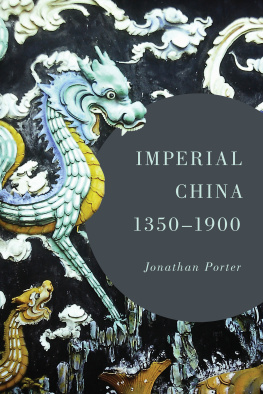
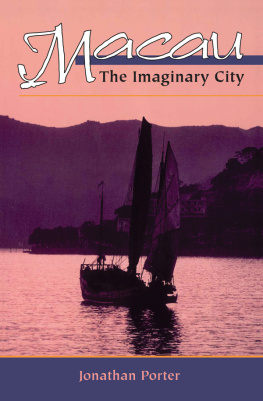


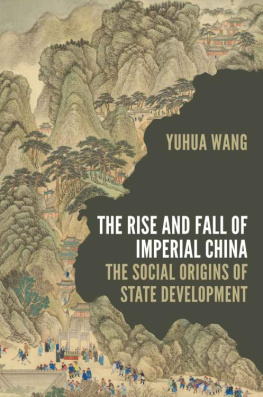
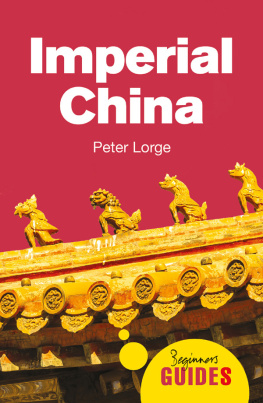
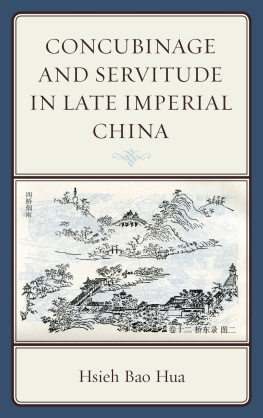
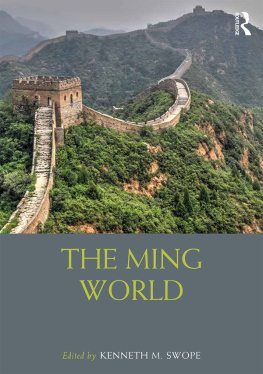
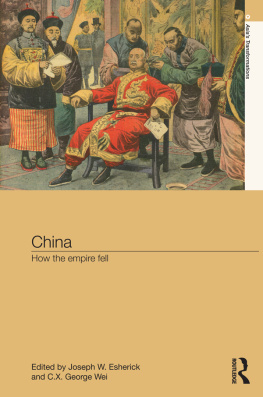

 The paper used in this publication meets the minimum requirements of American National Standard for Information SciencesPermanence of Paper for Printed Library Materials, ANSI/NISO Z39.48-1992.
The paper used in this publication meets the minimum requirements of American National Standard for Information SciencesPermanence of Paper for Printed Library Materials, ANSI/NISO Z39.48-1992.